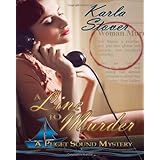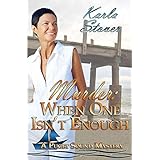I read up on Mr. Mardersteig and then popped over to Random House, thinking I'd give them a call. Their website doesn't have a phone number, so I sent an email. In the meantime, I read that Random House was started by two men, one of whom was Bennett Cerf. When I was little, my folks watched What's My Line, and he was part of the panel. How nice to inadvertently run into an old friend.
I, of course, Googled around and found only three comments on including font information in books. Apparently, font facts aren't an issue with many readers--more's the pity, but here's what those three had to say:
1. Why not? It takes up only a few words out of the entire page of book info anyway. Besides, type nerds like me like knowing the font used, and the publishers probably got tired of telling people in their emails that the font used was.
2. There's a certain amount of guesswork on my part, but I suppose it has to do with copyright. Fonts can be copyrighted. Someone has to create them after all. Publishers hold the concept of copyright in very high regard, so it stands to reason that they would want to give the font creator due credit.
 3. It brings peace and serenity to our minds in a world full of . . . Comic Sans.
3. It brings peace and serenity to our minds in a world full of . . . Comic Sans.I like knowing things such as fonts used and, getting back What's My Line, panelist Dorothy Kilgallen died a mysterious death while researching the Warren Committee's findings on the killing of President Kennedy. I read her biography. And I carefully researched my two murder mysteries. In A Line to Murder, the protagonist visits a former hippy commune. I visited an active commune. She goes to a psychic fair, so I did, too. She works with senior women in a retirement home and I do volunteer work at a soldier's home.
Murder: When One Isn't Enough takes place mostly on Hood Canal. My family has had summer homes there since the late 1950s. I know the area and the history. I've been to many Tahuya Days festivals and own a copy of Madame of the House, the book around which the story takes place.
Random House just responded to my email, asking which book I was referring to. If I get an answer, I'll post it. In the meantime, back to my historical fiction (but well-researched) novel.





.jpg)

.jpg)





No comments:
Post a Comment
I have opened up comments once again. The comments are moderated so if you're a spammer you are wasting your time and mine. I will not approve you.